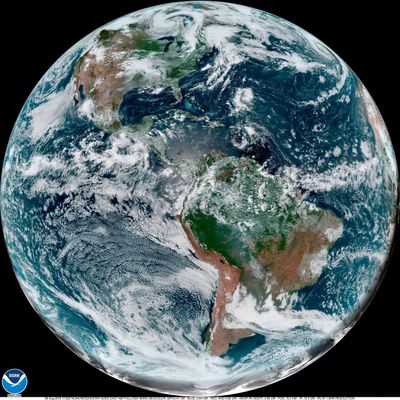More hurricanes possible as NOAA updates forecast

FORT LAUDERDALE, Fla. – Hurricane season may produce more dangerous storms this year than originally predicted, federal forecasters said Thursday, as conditions become more favorable for the formation of the storms going into the peak of the season.
The National Oceanic and Atmospheric Administration increased its forecast for hurricane season to five to nine hurricanes, up from four to eight in the prediction issued at the beginning of the season, the agency announced Thursday.
“We are increasing our prediction for a number of reasons,” said Gerry Bell, NOAA’s lead hurricane season forecaster. “In general, the observed and predicted oceanic and atmospheric conditions are now more hospitable for hurricane formation and intensification.”
The main reason for the increase is the dissipation of the Pacific Ocean phenomenon called El Nino, which tends to suppress hurricane formation, he said. This periodic increase in ocean temperatures has worldwide impact, including the production of the high-level wind shear that can tear up hurricanes before they can form. Without El Nino, it will be easier for hurricanes to come together.
NOAA announced the worsened expectation in its forecast for the peak of hurricane season, the span from mid-August to late October, which typically produces the vast majority of hurricanes and tropical storms. Hurricane season runs from June 1 to Nov. 30, but 95% of storms are produced during the 2 1/2 months of its peak.
During the time of the season beginning now, a procession of storms rolls across the Atlantic from the coast of Africa, some with the potential for strengthening into tropical storms or hurricanes.
The agency now says an above-normal season is more likely. NOAA maintained one earlier prediction, however, calling for two to four major hurricanes, which means those of Category 3 strength or higher, or storms with wind speeds of at least 111 miles per hour. But the agency said the more pessimistic prediction means that individual hurricanes could be worse than previously expected.
“Some of the hurricanes and major hurricanes could be longer and stronger than we predicted in May because atmospheric wind patterns are expected to be more hospitable to storm formation,” Bell said.
So far the season has produced a single hurricane, Hurricane Barry, which struck the Louisiana coast in July as a weak Category 1 storm.
Most forecasts had previously called for an average to below average season. The National Hurricane Center said there’s little chance over the next five days for the formation of tropical cyclones, the rotating storms that range in strength from tropical depressions to hurricanes.